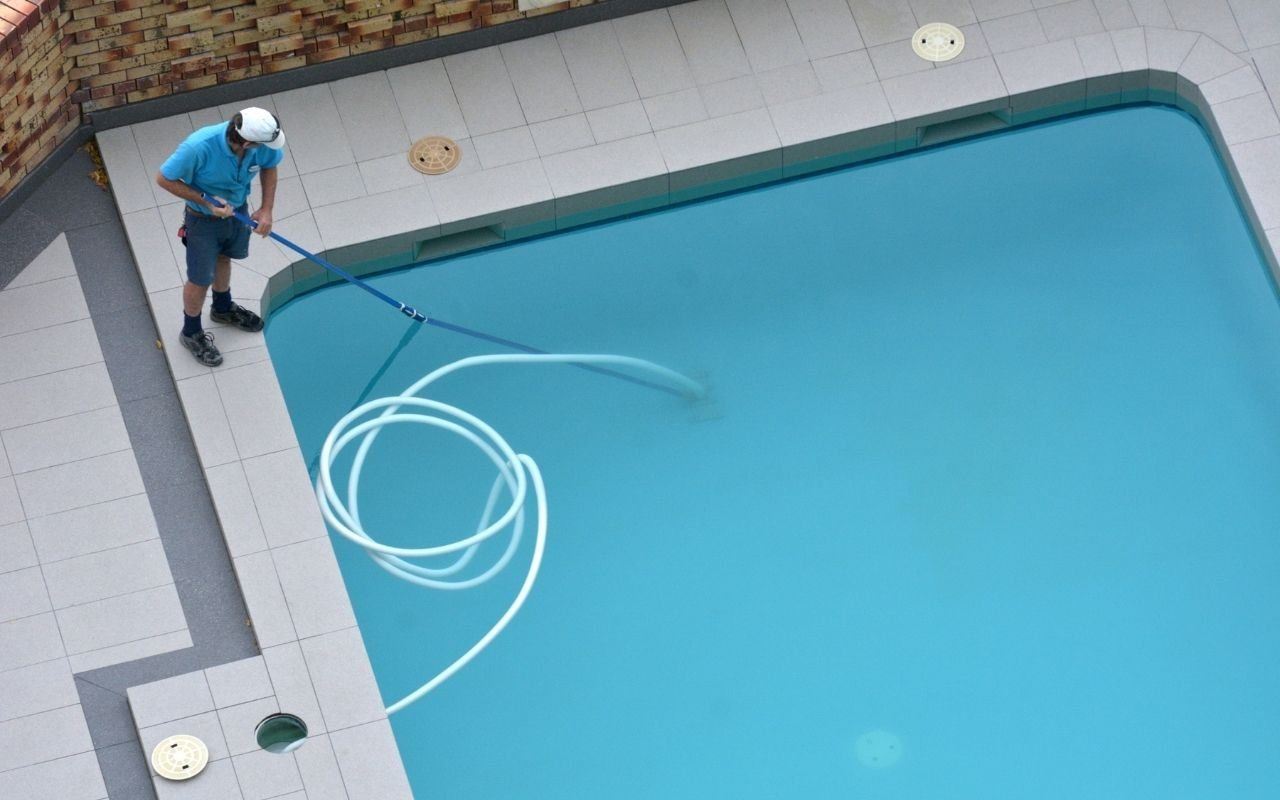Havuz Malzemeleri Nelerdir

Yüzme havuzları, bir havuz inşa etmek, işletmek ve bakımını yapmak için gereken çeşitli ekipman, malzeme ve kimyasalları içerir.
Havuz yapım malzemeleri:
- Beton veya vinil havuz çerçeveleri
- Havuz çerçeveleri ve destek sistemleri
- Su geçirmez malzemeler
- Seramik veya doğal taş kaplama malzemeleri
- Merdivenler ve havuz ekipmanları
Havuz filtreleme sistemi:
- Filtre tankı ve filtre malzemeleri (kum, zeolit, fiberglas vb.)
- Havuz Pompa ve motor
- Filtre valfleri ve manifoldları
- Drenaj ve drenaj sistemleri
Havuz suyu kimyasalları:
- Klor veya brom gibi dezenfektanlar
- pH'ı yükselten ve düşüren kimyasallar
- alkalinite düzenleyiciler
- Çökeltiler ve topaklaştırıcılar
- Alg inhibitörleri ve yosun kontrol ürünleri
- su dengesi kimyasalları
Havuz temizleme ekipmanları:
- Havuz temizleme makinesi veya otomatik temizleme robotu
- Havuz kovası veya ağları
- Süzgeçler ve temizleme fırçaları
- Teleskopik havuz direkleri
- Havuz vakum sistemleri
Emniyet araçları:
- Havuz çiti veya kapıları
- Havuz alarm sistemleri
- Can yelekleri veya can simitleri
- Havuz merdivenleri
Havuz ısıtma ve aydınlatma sistemleri:
- Isıtma sistemleri (ısı pompaları, gaz veya elektrikli ısıtıcılar)
- Havuzlar veya LED ışıklar
Havuzda yosun oluşumunu önlemek için neler yapılabilir?
Düzenli bir dezenfektan kullanın: havuzu düzenli olarak klor veya brom gibi dezenfektanlarla tedavi edin. Mikroorganizmaların büyümesini engeller ve alglerin büyümesini engeller. Havuz suyu, önerilen dezenfektan seviyelerini korumak için düzenli olarak test edilmelidir.
pH dengesini koruyun: Bir havuzun pH seviyesini doğru bir şekilde ayarlamak, alg oluşumunun önlenmesine de yardımcı olur. pH seviyesi normalde 7,2 ile 7,6 arasında olmalıdır. pH seviyesini düzenli olarak kontrol edin ve gerektiğinde pH'ı artıran veya azaltan kimyasallar kullanarak dengeleyin.
Yosun önleyici kullanın: Havuzunuzda yosun oluşumunu önlemek için yosun önleyici kullanabilirsiniz. Alg inhibitörleri, suya katılarak alglerin büyümesini engelleyen kimyasallardır. Havuzunuzun gereksinimlerini ve üreticinin talimatlarını karşılayan bir yosun öldürücü kullanın.
Düzenli olarak temizleyin: Yosun oluşumunu önlemek için havuzun düzenli olarak temizlenmesi önemlidir. Havuz vakumu veya otomatik temizleme robotu kullanarak havuz zeminini temiz tutun. Ayrıca, havuz yüzeyinde birikmiş olan yaprakları, çamuru veya diğer organik maddeleri bir kova veya ağ ile düzenli olarak temizleyin.
Filtre sisteminin bakımı: Filtreyi düzenli olarak temizleyin ve gerekirse filtre malzemelerini (kum, zeolit, fiberglas vb.) değiştirin. Verimli bir filtre sistemi, havuzun temiz ve yosunsuz kalmasına yardımcı olur.
Güneş Işığı Kontrolü: Güneş ışığı alglerin büyümesini teşvik edebilir. Özellikle güneşli günlerde güneş ışığına maruz kaldığınızda havuzunuzda yosun kontrolü veya gölgeleme yöntemleri kullanarak yosun oluşumunu engelleyebilirsiniz.
Havuz Kimyasalları ürünlerine ve fiyatlarına görmek için tıklayınız.
Havuz ızgarası nedir?
Havuz ızgarası, havuzun kenarlarında bulunan ve suyu tahliye etmek ve havuzu korumak için kullanılan yapı elemanıdır. Havuzlar genellikle plastik, paslanmaz çelik veya alüminyum gibi dayanıklı malzemelerden yapılır.
Havuz ızgaraları, veranda, güverte veya havuz çevresindeki diğer alanlarda su birikintilerini ve kaymaları önlemek için tasarlanmıştır. Havuzun estetik görüntüsünü tamamlamak için de kullanılır.
Havuzun altında genellikle bir drenaj sistemi vardır. Bu drenaj sistemi, havuzun etrafındaki suyun toplanmasını ve boşaltılmasını sağlar. Bu, suyun birikmesini ve kaygan bir yüzey oluşturmasını önler.
Yüzme havuzları çeşitli model ve boyutlarda mevcuttur. Bazıları düz bir profile veya ızgaraya sahipken, diğerleri dekoratif desenlere veya özel şekillere sahiptir. Izgara, havuzun tarzına ve kişisel tercihlere göre seçilebilir. Havuz ızgaraları, güvenliği artırmak, suyu tahliye etmek ve havuz ortamını daha düzenli ve estetik hale getirmek için önemli bir yapı elemanıdır.
Havuz Yosunu en iyi ne temizler?
Yüzme havuzlarından algleri çıkarmanın etkili bir yolu, yosun öldürücü kimyasallar kullanmaktır. Yosun öldürücüler, yüzme havuzundaki yosunları öldürmek ve büyümesini engellemek için tasarlanmış kimyasallardır. Genellikle sıvı veya granül formda bulunurlar ve havuz suyuna eklenirler.
Yosun öldürücüler genellikle organik veya inorganik bileşikler içerir. Alg hücrelerinin yapısını bozarlar veya alglerin besin almasını engellerler. Yosun öldürücüler, bir havuzdaki yosunları hızla etkisiz hale getirir ve yosun oluşumunu engeller.
Alglerde kimyasal kullanmadan önce, aşağıdaki faktörleri göz önünde bulundurmak önemlidir:
Alg Türü: Farklı alg türleri farklı alg kontrol ürünlerine yanıt verebileceğinden havuzunuzdaki alg türünü belirlemek önemlidir. Genel olarak, geniş spektrumlu bir alg öldürücü, çok çeşitli algleri etkili bir şekilde giderebilir.
Kimyasal uyumluluk: Yosun kontrol ürünlerini kullanmadan önce havuzdaki diğer kimyasallarla uyumluluğunu kontrol etmek önemlidir. Bazı kimyasallar birlikte kullanıldığında istenmeyen reaksiyonlara neden olabilir. Üreticinin talimatlarını dikkatlice okuyun ve kimyasal uyumluluk konusunda uzman tavsiyesi alın.
Dozaj ve kullanım talimatları: Yosun ilacı için doğru dozaj ve kullanım talimatlarına uyulması önemlidir. Önerilen dozu aşmayın ve etkili ve güvenli temizlik sağlayan belirtildiği şekilde kullanın.
Güvenlik talimatları: Pestisitleri kullanırken güvenlik önlemlerini dikkate almak önemlidir. Eldiven, gözlük ve koruyucu giysi gibi kişisel koruyucu ekipman kullanın. Ayrıca yosun öldürücüyü çocukların ve evcil hayvanların erişemeyeceği bir yerde saklayın.
